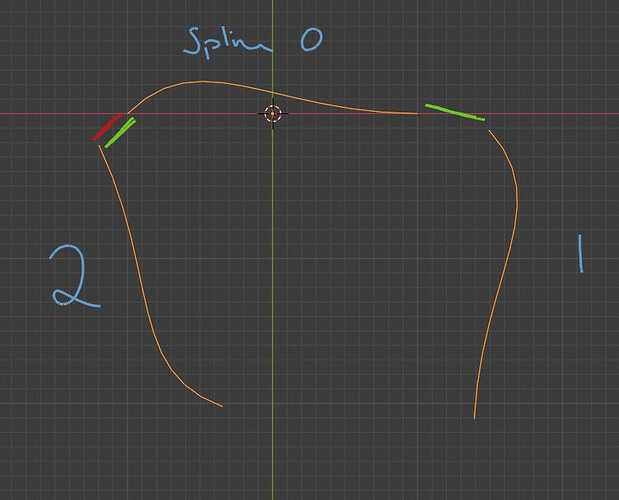I’ve been working on ways to make a “Connect Curve” node work. I’ve run into a couple of dead ends and wanted to share the thought process that has gotten me this far.
There are 2 modes for the node: Order and Threshold
Order is an easy one. Simply go through the splines in the order that they exist in the input geometry. Add them to a “merge map” structure that can be passed to an output curve building function.
Threshold is where I have run into trouble.
The first idea went like this:
- Input a threshold distance
- Create a flattened list of all of the splines
- Build a list of all “endpoints” (start and end)
- Create a KD tree of the endpoints of all of the splines
- Start on the first curve of the geometry and add it to the output curve, mark it as processed in the spline list and add it to the merge map
- Using the KD tree, look up the closest endpoint from another spline within the threshold
- If that spline has not been processed add it to the output curve, mark it as processed and add it to the merge map. then repeat the last step
- If it has been processed, skip it until an unprocessed spline is found and repeat from there. If none are found, the output curve spline is ended and a new spline is created with the next available unprocessed spline on the merge map.
- continue until all splines are processed.
- pass the merge map to the curve output function
For the most part, this implemented pretty well, but ran into an artistic issue:
This algorithm would produce the red connection in this image. Since spline 0 would match to spline 2, but when spline 1 is processed, it would not connect to spline 0 since spline 0 was already “used”. I believe this is mainly because while it is based on distance, this algorithm is still very much a linear search. So later closer connections may not be found until it is too late to use them.
A second algorithm that I attempted to implement to address this issue was this:
- Create a flattened list of splines for lookup purposes
- Build a list of all endpoints
- Build a KD Tree of all of the endpoints
- Go through each endpoint and use the KD tree to make a list of all of the endpoints connection permutations within the threshold, sorted by distance smallest to largest. Deduplicting for reverse relationships (endpoint 1=>5 is the same as 5=>1)
- Use this ordered list of connections to determine the order the splines should be added to the merge map - (This is where I had trouble managing how to build this correctly. It seems that all of the data needed is there, it was more a matter of how to manage it.)
- Pass the merge map to the output curve function.
